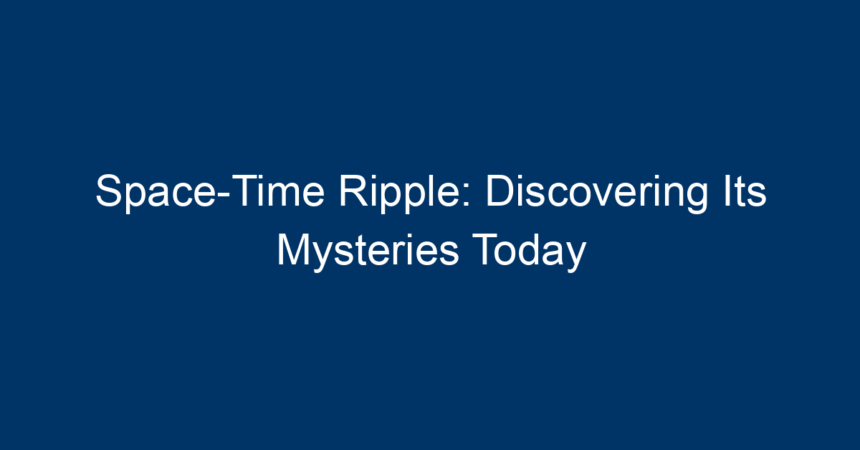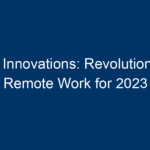The concept of space-time has fascinated scientists and philosophers alike for centuries. Among its many intricate phenomena, the term space-time ripple has emerged as a compelling point of study, offering profound insights into the fabric of our universe. This article delves into the mysteries surrounding space-time ripples, exploring their significance, discoveries, and implications for our understanding of the cosmos. Whether you’re a seasoned astrophysicist or a casual enthusiast, join us on this exciting journey through the universe’s most exhilarating secrets.
What Are Space-Time Ripples?
Understanding Space-Time
Before diving into space-time ripples, it’s crucial to understand what space-time itself is. Proposed by Albert Einstein in his Theory of Relativity, space-time merges the three dimensions of space with the dimension of time into a single four-dimensional continuum. In this model, the presence of mass and energy can warp this fabric, resulting in gravitational forces as we perceive them.
The Phenomenon of Space-Time Ripples
Space-time ripples, often referred to as gravitational waves, are distortions in the curvature of space-time caused by the acceleration of massive objects. When these objects—such as colliding black holes or neutron stars—move, they send ripples through the fabric of space-time at the speed of light. These ripples carry immense energy and information about the cosmic events that created them, resulting in a revolutionary way to observe the universe.
The Historic Discovery of Gravitational Waves
A Leap Forward in Astronomy
The first detection of gravitational waves occurred on September 14, 2015, by the LIGO (Laser Interferometer Gravitational-Wave Observatory) project. This groundbreaking event confirmed a prediction made by Einstein a century earlier. The detection arose from the merger of two black holes approximately 1.3 billion light-years away, generating ripples that LIGO was able to catch and measure.
The Science Behind Detection
LIGO employs highly sensitive instruments capable of detecting minuscule changes in distance—smaller than a proton—in space-time caused by passing gravitational waves. These distortions vary the distances between LIGO’s laser beam paths, enabling scientists to observe and analyze the properties of the space-time ripple.
The Significance of Space-Time Ripples
Understanding Black Holes and Neutron Stars
Space-time ripples provide a unique glimpse into the behavior of black holes and neutron stars, offering data that cannot be obtained through conventional optical observations. By studying these waves, scientists can learn about the mass, spin, and other intrinsic properties of these celestial objects, which in turn deepens our understanding of fundamental astrophysical principles.
Insights into the Early Universe
The study of space-time ripples also throws light on phenomena from the early universe. As a result of early cosmic events like the Big Bang, gravitational waves may serve as relics of that time. By analyzing these primordial ripples, astrophysicists can gain insights into the universe’s infancy and the conditions that led to its expansion.
Testing General Relativity
Gravitational waves act as a natural laboratory for testing Einstein’s Theory of General Relativity. As we detect more waves from diverse sources, scientists can examine if they align with Einstein’s predictions or if they reveal new physics in the process. This ongoing investigation could result in a significant shift in our understanding of fundamental forces.
Future Frontier: What Lies Ahead?
Advancements in Detection Technologies
The future of studying space-time ripples is exceptionally promising. Upcoming observatories, such as the European Space Agency’s LISA (Laser Interferometer Space Antenna), aim to extend gravitational wave detection to lower frequencies. This would enable the observation of ripples generated by a broader range of astronomical events, including supermassive black hole mergers and cosmological phenomena from the early universe.
Collaborations and Multimessenger Astronomy
The collaboration between different observatory types—such as electromagnetic, neutrino, and gravitational wave telescopes—heralds a new era known as multimessenger astronomy. By combining the information retrieved from space-time ripples with optical observations, scientists can create a more comprehensive picture of cosmic events, thereby enhancing our understanding of the universe’s mysteries.
The Role of Artificial Intelligence
Artificial intelligence and machine learning are poised to change the landscape of astrophysics. These technologies can analyze vast datasets from gravitational wave observatories much more quickly and efficiently than traditional methods, enabling the swift identification of significant cosmic events. As they evolve, AI could assist in predicting future gravitational wave events, making it simpler to allocate observation resources.
Challenges in the Study of Space-Time Ripples
Detection Limitations
While the technology for detecting space-time ripples has advanced remarkably, there are still challenges. The signals can often be faint and buried within noise from other cosmic events. Moreover, our current instruments have limited sensitivity, meaning many potential ripples may go undetected.
Theoretical Challenges
Understanding the full implications of space-time ripples requires a deeper theoretical framework. Questions still linger about the connection between gravity and quantum mechanics and whether any discrepancies in gravitational wave observations could lead to breakthroughs in unifying these fundamental theories.
Conclusion: Embracing the Mysteries of Space-Time Ripples
As we stand on the brink of revolutionary advancements in astrophysics, the study of space-time ripples opens the door to countless possibilities. Every gravitational wave detected is not just a ripple in space-time but a whisper from the universe, revealing its secrets.
Actionable Insights
-
Stay Informed: Follow the latest discoveries in gravitational wave astronomy through scientific publications and news outlets to keep abreast of evolving theories and technologies.
-
Engage with the Community: Join forums and social media groups focused on astrophysics to participate in discussions about the implications of space-time ripples and discover how they affect our understanding of the universe.
-
Support Scientific Research: Advocate for and, if possible, contribute to organizations that fund gravitational wave research and promote scientific literacy.
- Explore Further Projects: Keep an eye on emerging projects like LISA and other international collaborations that promise to extend our understanding of space-time and the mysteries it holds.
As we delve deeper into the cosmic ocean of knowledge, the mysteries of space-time ripples will continue to unfold, shaping our understanding of the universe for generations to come.




